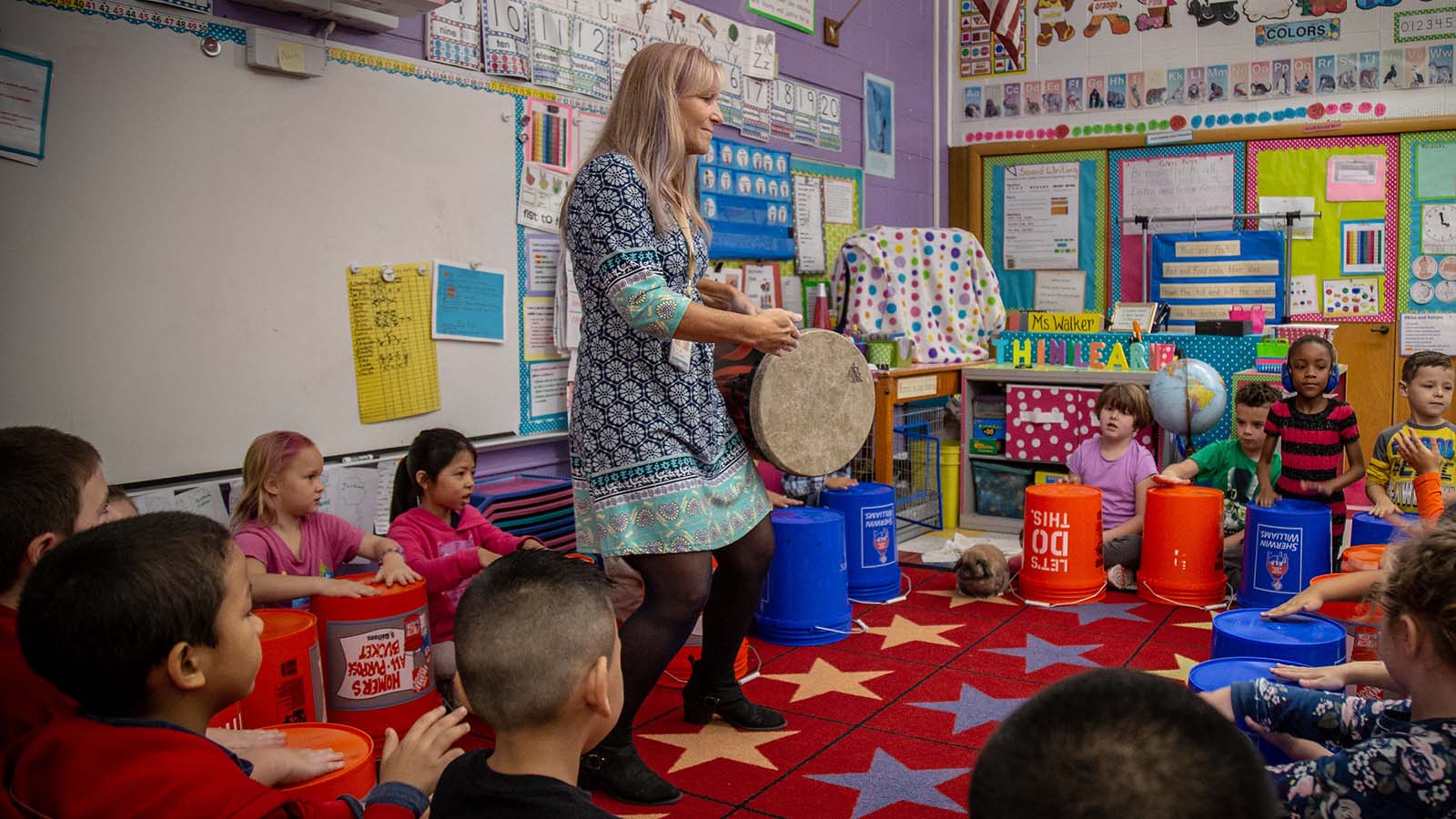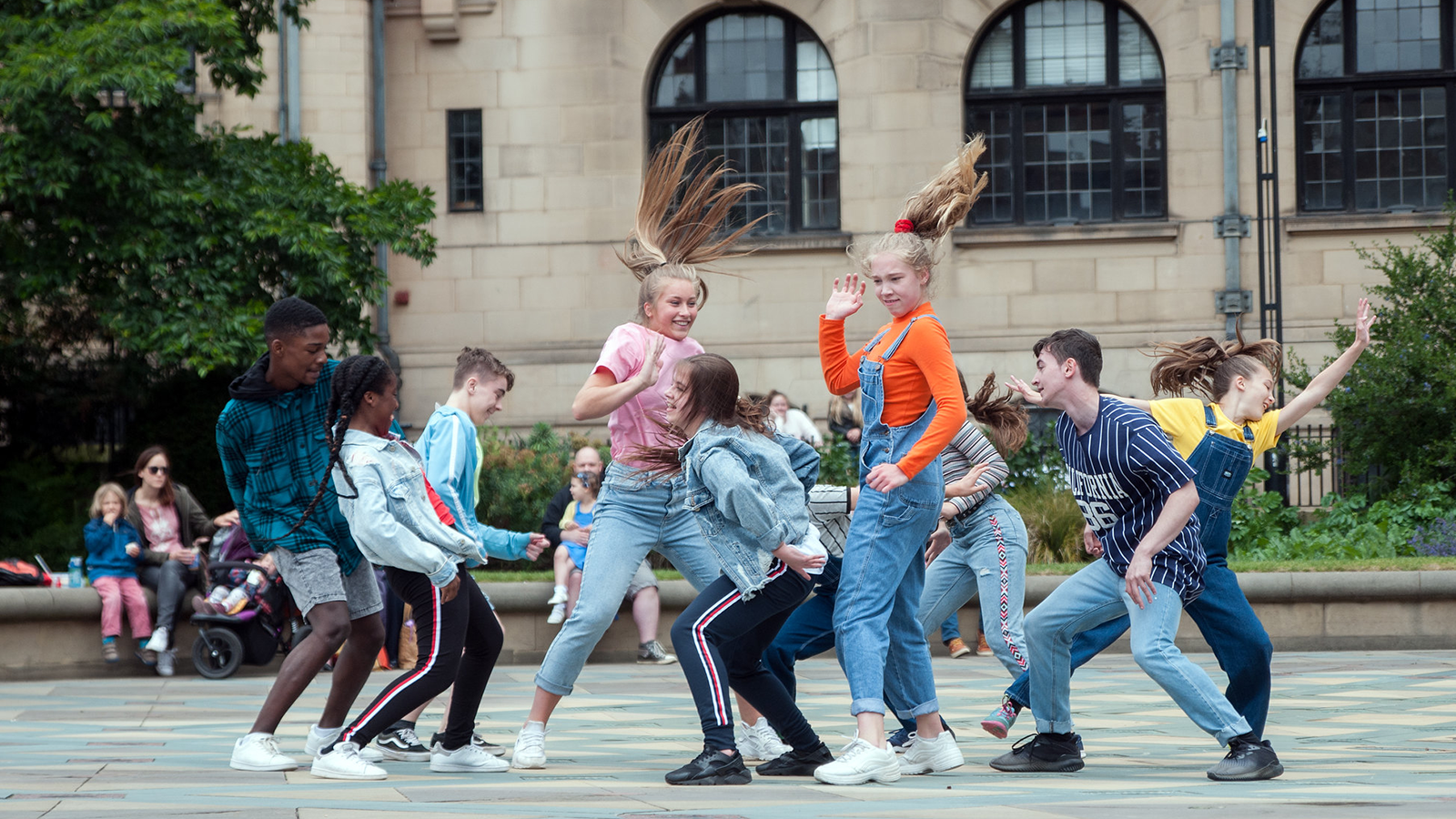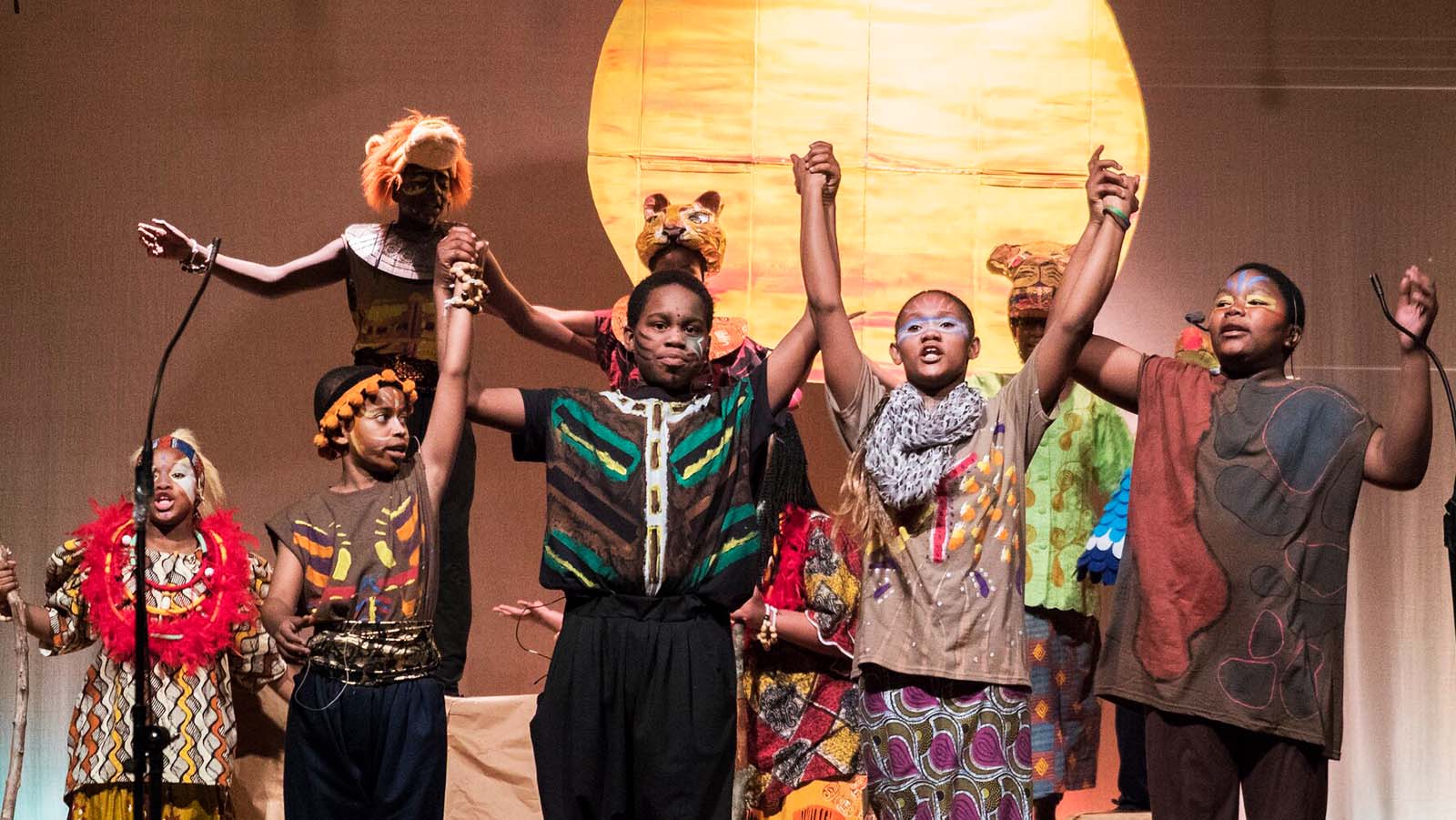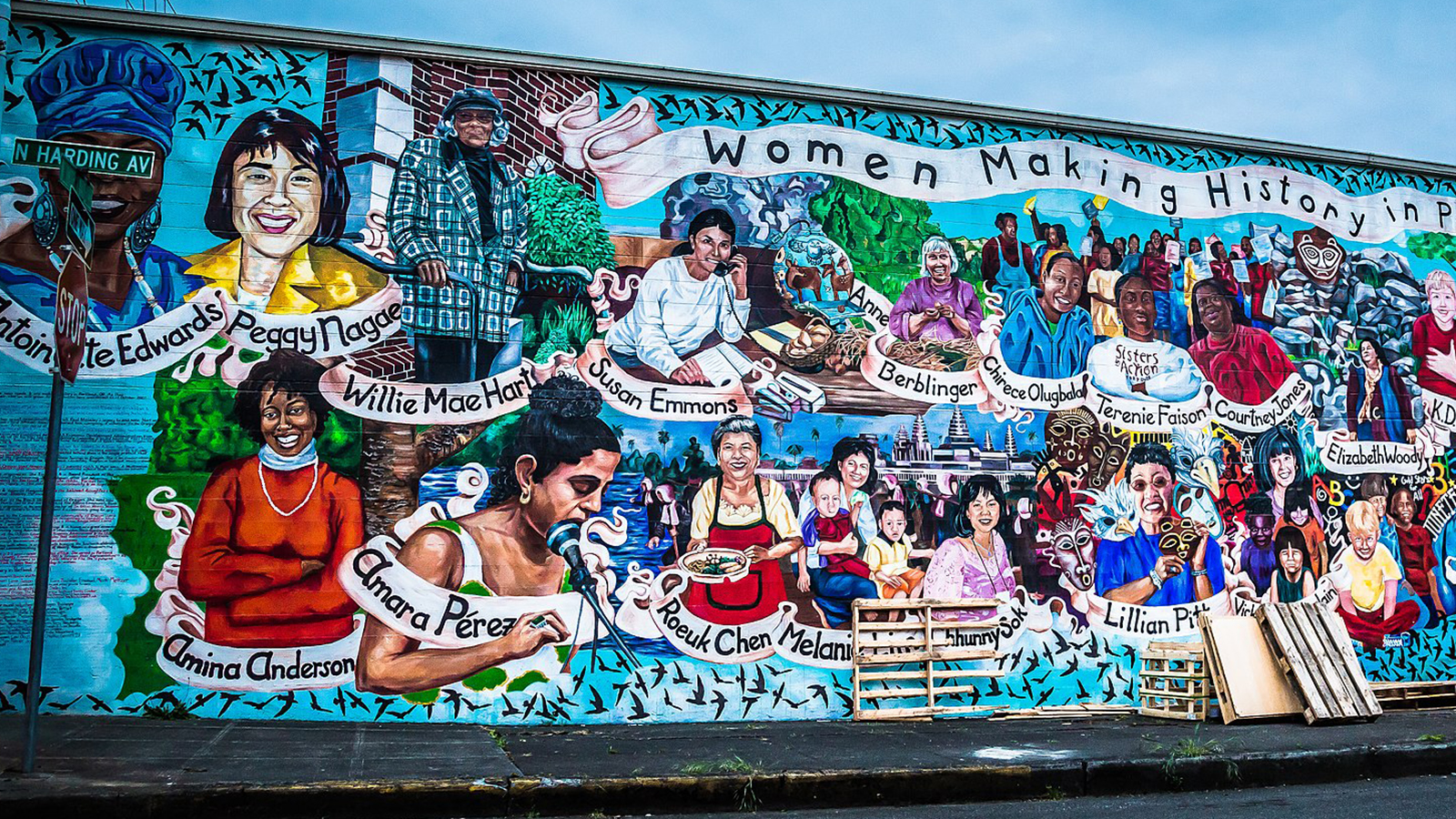Recommended for Educators of Grades K-12
In this resource you'll:
-
Explore the importance of prioritizing connections
-
Learn ways to sharpen relationship skills with the arts
-
Discover how to weave the arts into the fabric of schools
by Ashley Bell, Restorative Justice Instructional Specialist
In this resource you'll:
Explore the importance of prioritizing connections
Learn ways to sharpen relationship skills with the arts
Discover how to weave the arts into the fabric of schools
As educators work to counteract the many stresses born from over a year of isolation and at-home learning, cultivating meaningful connections is critical. While student achievement is at the forefront of educational progress, social and emotional wellness remains an equal priority. Return to in-person learning continues to reveal the profound impact the pandemic has had on students’ social and emotional wellbeing. Shao and Kang explain that relationship skills are one of five social-emotional learning competencies critical to not only social-emotional wellness but learning engagement and, ultimately, academic success (2022).

Self-expression, communication, and collaboration are just a few important skills supporting healthy, meaningful relationships. The arts allow us to share ideas, skills, and experiences in a way that cultivates lasting connections critical to building these relationships. By providing students an opportunity to engage in the four major artistic processes—creating, performing, responding, and connecting—we not only make their school experience more meaningful and personal, but allow the magic of the arts to deepen interpersonal connections within our school communities (Farrington et al., 2019).
After more than a year of isolation, school communities must prioritize connection. Cultivating a culture of connection requires a clearly communicated vision and commitment from all stakeholders. Though all school community members play a role in school culture and climate, building leaders are the driving force who inspire staff, students, and families to create a school culture where connection and relationships are a top priority.

At the height of the pandemic, students, staff, and caregivers alike were left to their own devices to maintain any sense of connection and relationship. Though most have returned to what we’ve always considered “normal,” many are still recalibrating, recovering, and rebuilding a sense of connection to the people and places around them. Teachers across the nation are seeing unparalleled social and emotional skill gaps in students. These gaps, combined with a society already heavily reliant on technology for connection, suggest we are moving further and further away from authentic, in-person relationships.
Schools have a unique and exciting opportunity to leverage collaborative, relationship-building experiences with the arts. These experiences are critical for students to gain a deeper understanding of not only themselves but their peers and the larger world around them (Farrington et al., 2019). This understanding is essential for developing healthy and meaningful interpersonal relationships.
Creating learning experiences and environments that enrich students’ social and emotional development builds their capacity to make meaningful connections, develop lasting relationships, and, ultimately, be invested in their school community (Cookson, 2023). A school community filled with students who feel a sense of value, ownership, and belonging fosters a culture of connection.
Social-emotional learning skills, like relationship building, are essential to classroom success. Relationship skills include students’ abilities to connect with others, demonstrate empathy, and understand various perspectives in order to build and maintain healthy, rewarding relationships (Farrington et al., 2019). Integrating arts in various forms and spaces is an approach educators can use to support students’ development of interpersonal and relationship skills, leading to a highly social, interactive, and collaborative avenue for self-expression, communication, and problem-solving.

The arts use a creative process that requires thinking in new and innovative ways. It is also a means for drawing inspiration from others’ unique perspectives and experiences to get the creative juices flowing. Brainstorming ideas, finding ways to make those ideas cohesive, then creating something interesting and captivating is not only exciting but rewarding. It’s a natural way for students to affirm one another, push their peers’ creative thinking, and provide constructive feedback to produce their best work, collectively. Creative collaboration helps students see the power of teamwork and the ability others have to pull ideas together.
Arts integration can be very personalized and is one of the most therapeutic forms of self-expression. Whether it’s drawing, writing, listening, or performing, art can be a vessel to express much more than words might allow, especially for students who can’t always find the words to articulate who they are or how they feel. You can just imagine how powerful it is for students to experience deep connection with their peers, simply through their personal or collective art form. By seeing, experiencing, and listening to the identity of those around them through the various arts, students will feel more connected to their peers, teachers, and their environment.
We often hear about integrating arts across the curriculum, but academic subjects are not the only opportunity to implement this. To truly build a sense of belonging, community, and strong relationships, the arts must be woven into the very fabric of school culture and climate. When we refer to the culture and climate of school, we’re talking about the feeling one experiences when they walk into the school, including the norms and values that exist in the words, actions, and thoughts of all members within the school community (School Climate & Culture, 2022).

Opportunity and space for students to create and experience art is abundant. Students can collectively work to create a mural or dance during lunch or recess. Responding to community-building prompts provided by the teacher through visual art, like story quilting or percussive art like stepping can build creative connections. Using protected schedule blocks like advisory time or class meetings to role-play allows students to process real-life situations that impact their daily lives. Students can bring items from home that represent who they are as a “show-and-tell,” then brainstorm ways to use those items to create a work of art that represents the class community. There are countless ways that students can access art to build connections and find experiences reflected upon the walls of their classroom and school.
Being equipped to integrate the arts with competing priorities is one way teachers can begin to prioritize connections. As schools navigate the vast challenges around our return to normalcy, embedding creative collaboration can be a freeing, fun, and meaningful way to rebuild students’ sense of community.
Students are most available for learning when they are affirmed, valued, and feel a sense of belonging—it is key to cultivating deep connections. The arts can significantly enhance students’ learning experience, whether they are enjoying others’ art or creating art forms of their own. Using the arts to cultivate a culture of connection in support of student success is a win-win.
To explore more K-12 arts integrated lessons, visit the Related Resources section at the bottom of this page or Lesson & Activities from the Digital Learning Resources Library.
 Ashley Bell has over a decade of experience in K–12 education. Ashley brings her previous experience as an ELA teacher and professional school counselor to her current role as a restorative justice instructional specialist. Follow or connect with Ashley on LinkedIn.
Ashley Bell has over a decade of experience in K–12 education. Ashley brings her previous experience as an ELA teacher and professional school counselor to her current role as a restorative justice instructional specialist. Follow or connect with Ashley on LinkedIn.

This collection on arts integration draws from more than a decade of the Kennedy Center’s efforts to clarify arts integration principles and implement best practices.
In this 6-8 lesson, students will learn how to use primary sources, and work in groups to create murals about the events and trends of a decade of the twentieth century. Students will focus their research on a specific category relating to the culture of that decade, and then depict their findings through a mural.
Bharatanatyam is a form of classical Indian art that, when translated into English, signifies the combination of expression, rhythm, music, and dance. Bharatanatyam dancers use gestures and expression to tell stories about love, hate, power, or something as simple as the weather. In this video, join teaching artist and performer Praneetha Akula as she demonstrates how hand gestures and footwork can tell a story about rainfall. By the end, you’ll have the tools to dance a story about your day!
Stepping is a percussive art form created by African Americans on the campuses of Historically Black Colleges and Universities. In this lesson, Mr. Ryan introduces basic stepping movement and rhythm patterns.
In this 9-12 lesson, students are introduced to the idea of a “utopia”—an idealized society. Students will write and perform a monologue expressing an ideal utopia based on one of the nine elements of society mentioned in Sir Thomas More’s book.
In this 6-8 lesson, students will apply the concepts of symbolic representation to create “identity boxes” representative of their internal and external selves. They will research and explore the work of artists Lucas Samaras and Joseph Cornell to gain a deeper understanding of their use of objects and symbols in “portrait” boxes.
In this 3-5 lesson, students will explore how various cultures have contributed to making the United States the unique and diverse country that it is today. Students will create a class recipe book demonstrating the diverse flavors of their cultures.
Join textile artist Marquetta Johnson in her studio as she shows you a way to share your adventures and happy moments with a story quilt. Just grab some art materials from around the house, pick a story to share, and you too will be on your way to creating a work of art with Marquetta!
Writer
Ashley Bell
Presented by
Kennedy Center Education Digital Learning
Copy Editor
Nathaniel Bradley
Published
April 19, 2023
In this 6-8 lesson, students will collaborate in teams to draw and pantomime the meaning of Shakespeare's words and phrases. Students will be introduced to etymology, the study of words, and write a story using “The Bard’s” words, lines, and phrases.
The arts are a prime tool for building skills in collaboration. Here are 6 tips to create successful collaborations and develop effective group learning through the arts.
Enter an artist studio space and witness the creative process. In this video, artist and performer Nicoletta de la Brown provides insight into her work where she creates headdresses that speak to her thoughts on identity and power. Watch as she breaks her process down into three steps: gathering, making, and activating.
Come on down to the farm with yoga teaching artist Ashley Laverty! This creative drama class uses yoga to get your body moving and your creative juices flowing. You’ll visit all the animals on the farm as Ashley leads you through guided imagery and gentle poses. Your body and imagination join together to make this journey one of discovery and delight.
Turn your greatest fear into your greatest inspiration using creative writing. In this video, poet and spoken word artist El’Ja Bowens demonstrates how you can overcome your anxieties through writing stories where you conquer them. Face your fears by transforming them with your creativity and the power of the written word.
When K-12 teachers integrate arts into specific disciplines they can build creative learning spaces without compromising rigor in a primary content area.
Inclusion teachers can bolster engagement with arts integration by adapting time, classroom tools, and instructional techniques.
Explore how arts integration supports the tenets of Whole Child initiatives
Eric Friedman
Director, Digital Learning
Kenny Neal
Manager, Digital Education Resources
Tiffany A. Bryant
Manager, Operations and Audience Engagement
Joanna McKee
Program Coordinator, Digital Learning
JoDee Scissors
Content Specialist, Digital Learning
Generous support for educational programs at the Kennedy Center is provided by the U.S. Department of Education. The content of these programs may have been developed under a grant from the U.S. Department of Education but does not necessarily represent the policy of the U.S. Department of Education. You should not assume endorsement by the federal government.
Gifts and grants to educational programs at the Kennedy Center are provided by A. James & Alice B. Clark Foundation; Annenberg Foundation; the Andrew W. Mellon Foundation; Bank of America; Bender Foundation, Inc.; Carter and Melissa Cafritz Trust; Carnegie Corporation of New York; DC Commission on the Arts and Humanities; Estée Lauder; Exelon; Flocabulary; Harman Family Foundation; The Hearst Foundations; the Herb Alpert Foundation; the Howard and Geraldine Polinger Family Foundation; William R. Kenan, Jr. Charitable Trust; the Kimsey Endowment; The King-White Family Foundation and Dr. J. Douglas White; Laird Norton Family Foundation; Little Kids Rock; Lois and Richard England Family Foundation; Dr. Gary Mather and Ms. Christina Co Mather; Dr. Gerald and Paula McNichols Foundation; The Morningstar Foundation;
The Morris and Gwendolyn Cafritz Foundation; Music Theatre International; Myra and Leura Younker Endowment Fund; the National Endowment for the Arts; Newman’s Own Foundation; Nordstrom; Park Foundation, Inc.; Paul M. Angell Family Foundation; The Irene Pollin Audience Development and Community Engagement Initiatives; Prince Charitable Trusts; Soundtrap; The Harold and Mimi Steinberg Charitable Trust; Rosemary Kennedy Education Fund; The Embassy of the United Arab Emirates; UnitedHealth Group; The Victory Foundation; The Volgenau Foundation; Volkswagen Group of America; Dennis & Phyllis Washington; and Wells Fargo. Additional support is provided by the National Committee for the Performing Arts.
Social perspectives and language used to describe diverse cultures, identities, experiences, and historical context or significance may have changed since this resource was produced. Kennedy Center Education is committed to reviewing and updating our content to address these changes. If you have specific feedback, recommendations, or concerns, please contact us at [email protected].